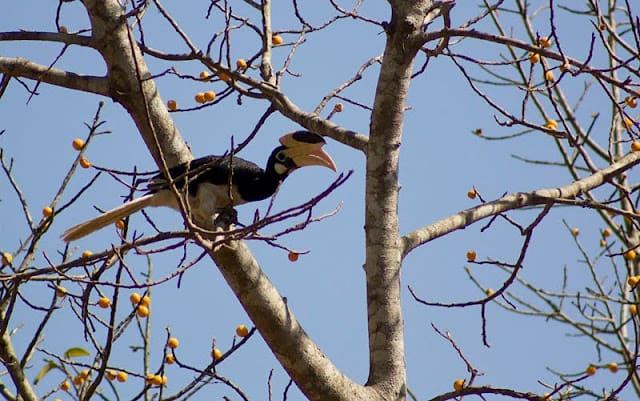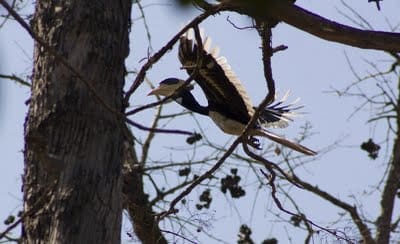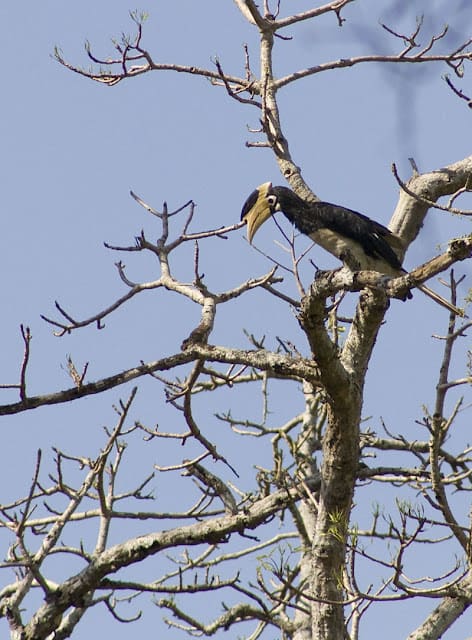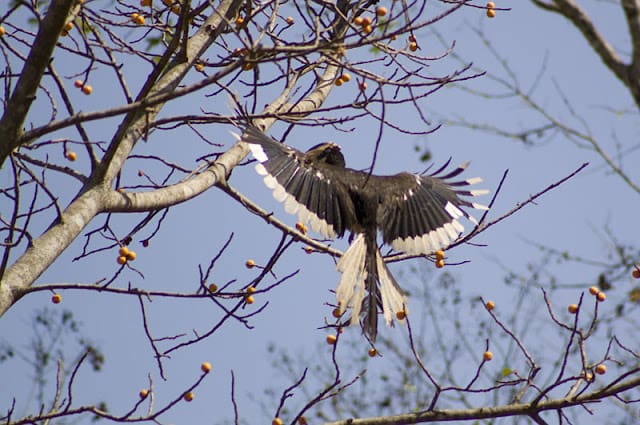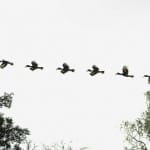 When you mention Dandeli, people respond in two ways. “Rafting!” exclaim the majority. The others enthusiastically say: “Hornbills!” On our trip, we (Sahastra, Bijoy, Andy, Satish and I) didn’t even consider the former.
When you mention Dandeli, people respond in two ways. “Rafting!” exclaim the majority. The others enthusiastically say: “Hornbills!” On our trip, we (Sahastra, Bijoy, Andy, Satish and I) didn’t even consider the former.
Four species of Hornbills are found in the Western Ghats. At Dandeli, it was the Malabar Pied Hornbill (Anthracoceros coronatus) that held our rapt attention for over two hours. After catching mere glimpses of these birds the previous day close to the core area of the reserve, we were in for a treat as we entered the timber depot in the heart of Dandeli town. Just as we alighted from our vehicle at the entrance to the depot, we saw a flurry of movement on a fruiting tree. Our jaws dropped. When the folks at the Kulgi Nature Camp told us that we would find hornbills at the depot, we imagined that they were referring to the commoner Malabar Grey Hornbill (Ocyceros griseus). But here, as we watched open-mouthed, four or five Malabar Pied Hornbills, among the most endangered hornbills in India, fed on berries while several others flitted around just about everywhere.
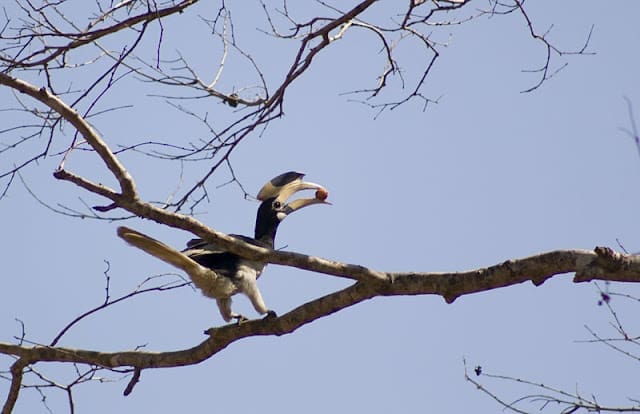 |
| Getting ready to swallow |
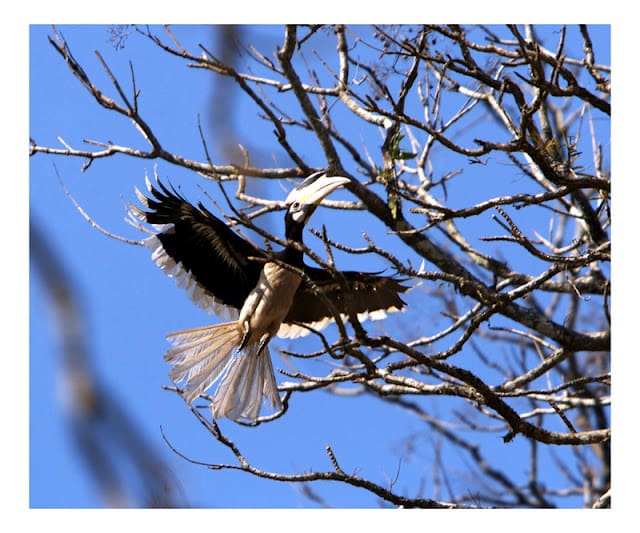 |
| They were flying about everywhere |
Although these birds are categorised as ‘NT’ (Near Threatened) by the IUCN, they did not appear to be threatened here. Like B2 bombers, they would appear out of nowhere, transfix us with their graceful glides, and disappear as swiftly as they had arrived.
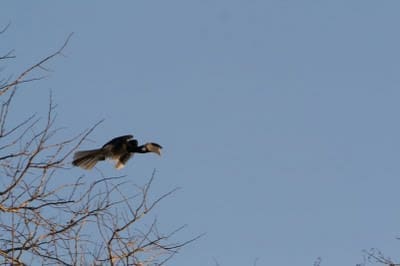 |
| Incoming… |
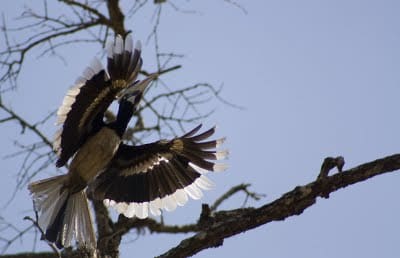 |
| Transfixing… |
Hornbills are classified under the family Bucerotidae in the order Coraciiformes. Birds of the this family are characterized by long, downward-curving bills which resemble horns. In some species the bill has a casque on the maxilla (upper jaw/beak). The scientific name of the family refers to the bill’s shape — “Buceros” meaning cow’s horn in Greek. Hornbills are the only birds in which the axis and atlas (the first and second vertebrae) are fused together. This skeletal structure is believed to help support the huge bill, better. They are also the only birds with a two-lobed kidney (in all other birds it is three-lobed). The casque is mostly hollow and is made up of keratin (the same material that makes up the beak).
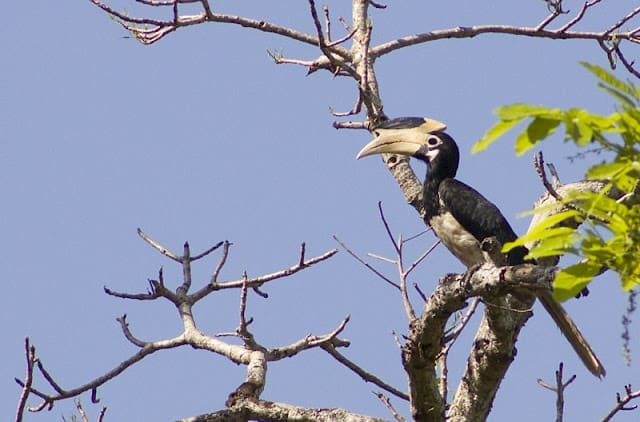 |
| The large downward-curving beak is characteristic of hornbills |
The use of the casque is a subject that is widely debated. Some consider that it serves as an indicator of the bird’s age, sex etc. There are others who contend that it is used in fighting rivals or for displays. Some are of the opinion that it helps to amplify the make the bird’s call and make it resonant.
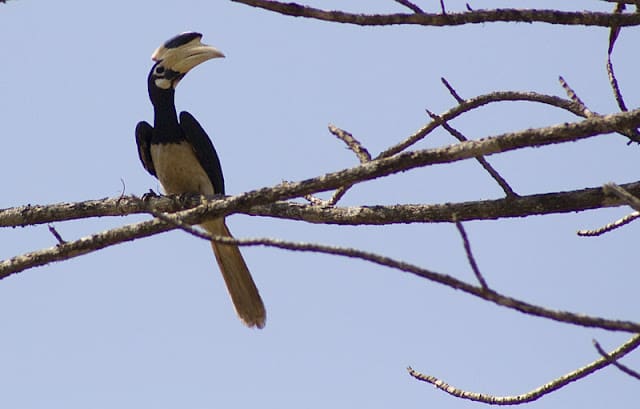 |
| The Malabar Pied Hornbill’s casque is more than half of its beak in length and the posterior ends in black |
The female bird can be easily differentiated from the male by the white region around the eye. In the male this region is completely black. The Malabar Pied Hornbill, like many other hornbills, are monogamous. They build their nests in the hollows of large tree-trunks. The female then imprisons herself inside the hollow by sealing the opening with a plaster that is mainly made up of mud, faeces and fruit pulp. During this time it is up to the male to feed her. This he does by passing food through a slit in the sealed opening. During incubation, the female undergoes a complete and simultaneous moult (shedding of existing feathers and growing new ones). Perhaps the old feathers serve as lining material for the nest by the time the chicks hatch (this is my surmise and it is gladly open to correction). When the chicks hatch and the nest cavity becomes too small to accommodate all of them, the mother breaks open the seal and emerges. She then starts assisting the male in feeding the chicks.
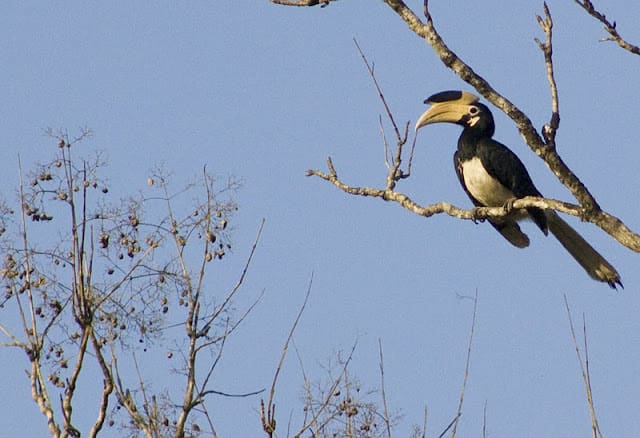 |
| A Female Malabar Pied Hornbill – The characteristic creamish-white around the eye is clearly visible |
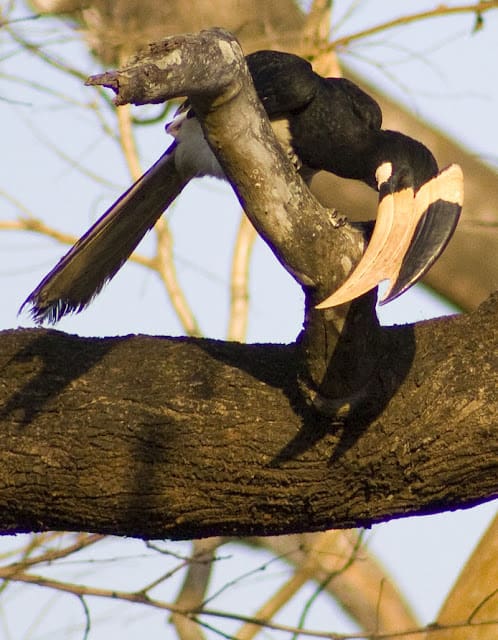 |
| The male inspecting the underside of a branch |
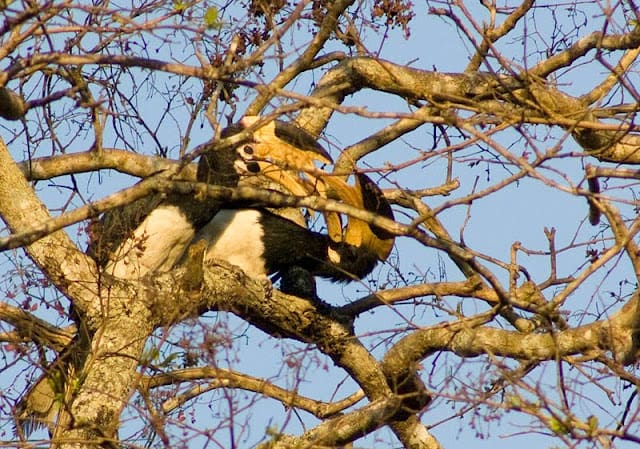 |
| The pair clasping beaks |
- Savannah Sprinter – A day at the office with the cheetah - April 9, 2020
- Mangalajodi – birds and serenity in a winter wetland - April 14, 2018
- Let the sleeping tiger lie – on meeting the big cat on foot - March 13, 2017

